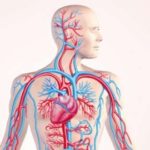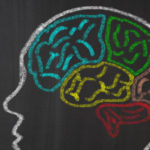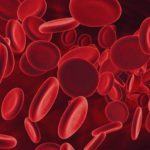Hypertension effects – is hypertension dangerous?
Hypertension is one of the leading causes of the global burden of disease. The rate of age-related increase in blood pressure and the prevalence of hypertension varies among countries but hypertension is present in all populations.
Normal circulation
The heart continuously pumps blood during life to all organs of our body. Its aim is to deliver oxygen and nutrients to tissues and organs so that they can generate energy for their functions. Blood undergoes oxygenation in the lungs where carbon dioxide is exhaled. This oxygenated blood reaches the heart and is pumped out to the whole body. The force with which the heart pumps out the blood generates pressure in the arteries (blood vessels carrying blood from the heart to the periphery). This pressure is called blood pressure and it is maintained in a narrow range. If the pressure is below the normal level, organs will not receive an adequate amount of oxygen which can result in a failure of their functions. If the pressure is above the normal level then it may result in damage of fine vessels (capillaries) in body organs.
Blood pressure control
In any system made up of a pump (heart) and a closed system of pipes (blood vessels or arteries), the flow of liquid (blood) depends on the pressure difference generated by the pump and the resistance to flow in the pipes. Normal pressure is about 120/80 mm Hg in healthy young adults. It is affected by many factors like emotional stress and anxiety. In some individuals, blood pressure is higher when taken by a physician (white-coat hypertension). Systolic and diastolic pressure normally fall by as much as 20 mm Hg during sleep, so they are called ‘dippers’. In individuals with hypertension, the fall during sleep is reduced or absent (non-dippers).
The blood pressure, in general, is lower in young women than in young men until the age of 55–65 years (perimenopausal period), after which it becomes comparable. Because there is a positive correlation between blood pressure and the incidence of heart attacks and strokes, the lower blood pressure before menopause in women may be the reason for which women have a lower incidence of heart disease and live longer than men. The probability that a middle-aged or elderly individual will develop hypertension in his or her lifetime is 90%.
How to define hypertension
Current guidelines define normal blood pressure as a systolic pressure of < 120 mm Hg and a diastolic pressure of < 80 mm Hg. Hypertension is defined as an arterial pressure greater than 140/90 mm Hg in adults on at least three consecutive visits to the doctor’s office. People whose blood pressure is between normal and 140/90 mm Hg are considered to have pre-hypertension and are advised to modify their lifestyle to lower their blood pressure to below 120/80 mm Hg. The systolic pressure normally rises throughout life and diastolic pressure rises until age 50–60 years but then falls.
Hypertension effects
The hypertensive disease may be completely asymptomatic and is often detected during routine screening (hence called ‘the silent killer) or may present with headaches, fatigue, and palpitations (undue awareness of one heartbeat). Some patients develop epistaxis (bleeding from the nose) as the first presentation when this condition is detected. Some of the serious and potentially fatal effects of hypertension are as follows:
- Myocardial infarction – commonly called ‘heart attack’, occurs due to reduced blood flow in the myocardium (heart muscle) resulting in severe chest pain and death.
- Congestive heart failure – this condition takes place when pumping action of the heart weakens due to increased pressure against which the heart is pumping in uncontrolled hypertension.
- Thrombotic and hemorrhagic strokes – clotting of blood occurs in blood vessels of the brain leading to paralysis. Due to high blood pressure, small blood vessels in the brain may rupture leading to encephalopathy.
- Hypertensive encephalopathy – is characterized by alterations in mental status, stupor, coma, and seizures.
- Renal failure – kidneys fail to excrete the products of metabolism resulting in a rise of urea and creatinine in the blood.
- Peripheral arterial disease – hypertension is a risk factor for deposition of fat in the blood vessels (atherosclerosis) leading to narrowing of the lumen. This may result in foot gangrene (black discoloration of the foot due to the death of tissues).
Hypertension is a growing problem globally, which is possibly related to an increased incidence of obesity. It is a lifestyle disease and early detection is crucial to prevent its effects and complications. A regular health check-up in adults can go along with reducing the morbidity and mortality rate associated with this disease.




























